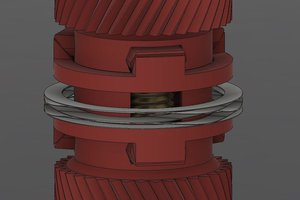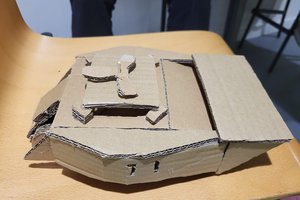Disclamer:
I can't really take any credit for any of this as I have learned it all from various folks through my life. I'm posting it because I still find this kind of totally simple answer the best kind of hacks!
This could not be simpler:
- Measure the outside diameter of the threaded bolt of rod. Be sure to hold your calipers perpendicular to the threads so you get a good measurement of the outside.
- Next turn them with the threads to try and get a measurement of how deep the threads are. This isn't super critical, but will make our estimate better.
- My unscientific approach is to round down the inside diameter to the closest millimeter. Hardly accurate, but I've found it a good working start. If the threads are very tight you might just go with the inner diameter.
- For the outer diameter of the nut, I'd suggest starting with just doubling the diameter. Check how much space you have an make it as large as possible with enough that you can get it (and a wrench) in.
- Then all you need to do is make a circle and a hexagon and then extrude. In any 3D modeling program, this is dirt simple. I did the one in the example in under two minutes in Fusion 360. I also just posted some SIMPLE OpenScad file that will make it. See attached.
- I recommend printing with more perimeters than normal, say 4 or 5 depending. This will make it almost a solid print.
- If this will be for outdoor use or see any heat then I would suggest PETG or even some kind of Nylon. But don't discount PLA because it is soft enough that it will easily have threads cut in it.
- If you have a thread tap handy then you can certainly use it, but after doing this several times I found it not really necessary. I've particularly found this technique useful on threads that I don't recognize and don't have a tap for.
- You can also heat the threads before screwing on. Heat just to the softening temp of the plastic, don't get the threads red hot! This will make a more permanent nut so it not necessary or applicable in all situations.
- This is not a solution if the nut will encounter any wear, will need to be loosened and retightened on any kind of regular basis, or be need to put significant pressure or endure any kind of hammering forces.
 Nathan Brown
Nathan Brown

 ReidDye
ReidDye
 WalkerDev
WalkerDev
 kristina panos
kristina panos
Just for clarification... yes this is on a kids stroller. It has been on there for about three months and shows no signs of wear. I think this is a good example of a good use of this technique. There is no real "load" on the nut, it really holds the axle clip tight to the fork. That clip will take all the load (if any) and the nut just keeps it on.